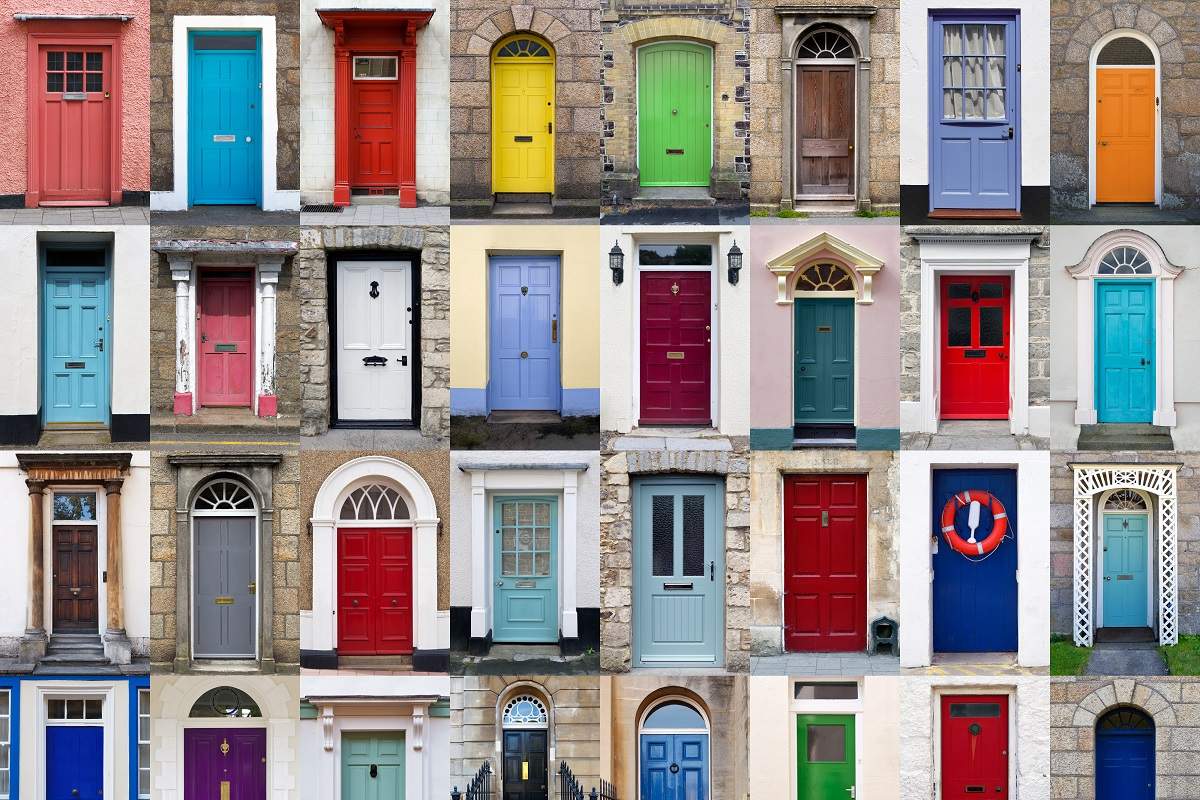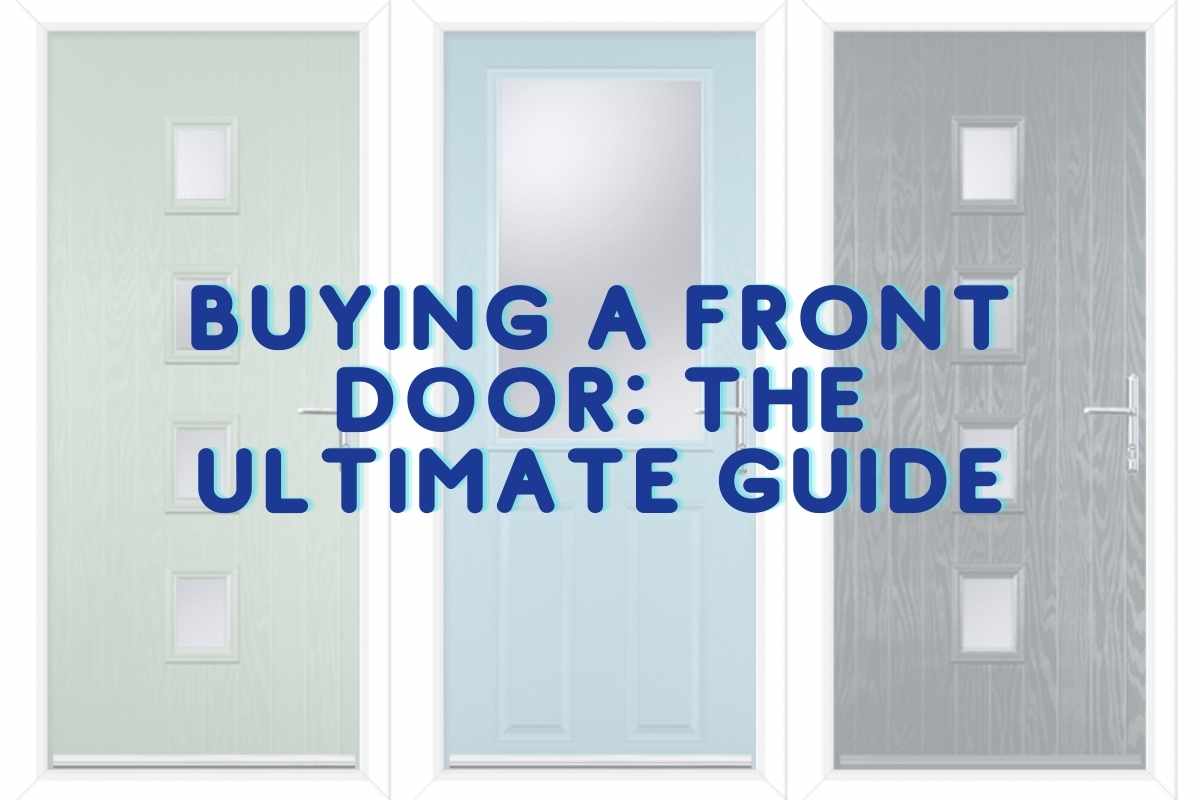Buying a Front Door: The Ultimate Guide
Buying a Front Door: The Ultimate Guide
It’s always important to make a good first impression, and a great front door can do just that. They call it ‘kerb appeal’, but the ideal door offers more than just distant, superficial benefits. Modern innovations in security, insulation, and weather-proofing offer a range of door solutions tailored to your taste. The difficult part when buying a front door is getting a handle on all the options.

What to Look for in a Front Door
As most intruders enter through the front door, it’s always important to ensure your door is sturdy, reliable, and industry accredited. Look out for reinforced frames and security measures like the Secure By Design (SBD) doors developed with insights from the British police.
However, basic security is the least a door can do. It’s a low bar, over which your ideal new door should stand firm. The right door should be easy to clean and maintain and should be able to keep the elements out, as well as intruders. Look at the heat efficiency, or U-value, of any prospective front door.
The door should suit your aesthetic sensibilities and those of your home. It should fit snugly, as well as securely, and operate in a smooth, stress-free, rattle-free manner.
To achieve these basic goals in a budgeted, long-term timeframe, you have four main choices of front door material.
Front Door Materials
The main door materials on the market are timber, uPVC, aluminium, and solid core composite doors. As well as their current benefits, it may also be worth considering each materials contexts and trends in the market when buying a front door. This way, you can compare and contrast your options and learn from others to find the perfect door for you.
Timber – Solid Wood
Wood is the oldest of the current set of front door materials. Its traditional legacy leaves the gift of class and the curse of inefficiency. Unlike other engineered materials, wood can be vulnerable to cracking, warping, or rotting. Modern treatments and varnishes curb this problem but struggle to stamp it out entirely. Similarly, wooden doors aren’t as heat efficient as their newer counterparts.
Within wooden door options, the choices in solid and veneer doors provide further customisation. Solid wood doors, as the name suggests, offer traditional, all-natural wood. They commonly come in a frame and panel pattern, in a softwood or hardwood grain.
Hardwoods like oak grow slowly, so their rings provide a close-knit, robust quality. They, therefore, offer higher durability and strength, at a higher financial and environmental cost than softwoods like pine.
Timber – Veneer
Buying a front door made from veneered timber, on the other hand, provide a more cost-effective wooden door choice. Comprised of thin panels bonded to a structural wood or MDF core, they are far cheaper than solid wood. However, they require far more maintenance than solid wood, in the form of a suggested annual sanding and treating.
All in all, timber doors provide class and majesty. For many customers and many properties, this aura makes any financial or maintenance cost worthwhile.
Aluminium
Aluminium’s strength lends its distinct advantages in front door manufacture. It allows for sleek designs with bold angles and large glass panelling. As a metal that never rusts and rarely corrodes, aluminium boasts some ideal qualities in a door. This efficiency and durability make it a popular choice for modern and post-modern designs. Despite its introduction before uPVC in the post-war period, aluminium remains among the cutting edges of home design.
However, as a metal, it’s heat efficiency leaves something to be desired. Aluminium doors may require extensive use of draught-excluders or a well-insulated inner door. These heating and insulating expenses add to a sizable upfront cost. Like wooden doors, with aluminium, you pay for style.
uPVC
Unplasticised PolyVinyl Chloride, or uPVC, engineers solutions to timber’s expense and vulnerability. Cast in stylised shapes and patterns, uPVC’s flexibility and impermeability make it versatile and highly energy efficient.
Buying a front door made of UPVC proves to be a cost-effective and highly customisable option. As well as the full spectrum of RAL colours, uPVC can even provide realistic woodgrain effects, in a variety of shades and tints. In houses which require rustic, traditional exteriors but minimalist interiors, uPVC doors can provide dual colouring options. The material thereby gives a wood effect on the outside but a classic white on the inside.
Other material combinations can enhance uPVC’s heat efficiency and security. While the material is relatively strong on both these points, it’s not the best in the market. As with all doors, it’s important to invest in a reliable lock and handle system, as uPVC handles can prove unreliable. The extent of these reports could come from uPVC’s popularity, as the cost-effective door option of choice.
Solid Core Composite Doors
Solid core composite doors combine high-performance materials and techniques to form a 21st-century front door solution. Their design wraps traditional wooden cores and frames in GRP, or glass-reinforced plastic. They, therefore, gain the strength and durability akin to a boat hull. While fibreglass keeps ocean currents and chills out of ships, GRP protects homes from whatever the weather throws at them.
They often incorporate rebates into their structure, to reinforce the connection between door and frame. This structural feature creates grooves in the door which line up and intersect with the door when closed. Rebates thereby prevent water and heat from creeping around the door’s edges, allowing composite doors to extend their weather-proof advantage through the frame to the house.
Building on uPVC’s heat efficiency, solid core composite doors are the most heat-efficient doors on the market. They also exceed uPVC in upfront cost, but the benefits of heat efficiency to the budget and the environment span decades.
How To Choose
Choosing the right door depends on your building’s sensibilities, as well as your own. It may be worth researching your home’s construction history to understand which style suits it best. Even if you’re set on a modern material, your building’s period might drop hints about ideal panelling patterns, letterbox slots, or handle style.
In any case, a new front door can do so much more than keep you secure. It can brighten up your every day, it can raise your property value, it can save you heating bills.
Your lifestyle might demand long hours spent working from home, for example, and you might lean towards a low-maintenance, heat-efficient composite door. If that’s the case, Just Doors and Conservatories.com have a customisable door platform to tailor your front door solution to you.

